Outside, In
Physician-scientists track the profound effects the environment has on humans
- Profile
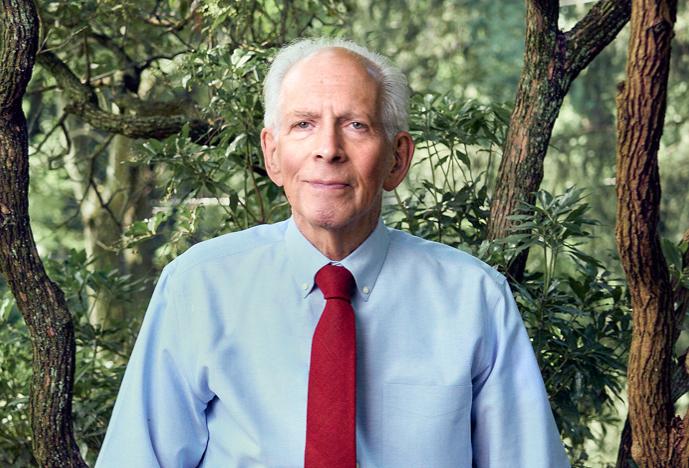
Lloyd Tepper ’57
Adjunct Professor of Occupational and Environmental Medicine
Perelman School of Medicine
University of Pennsylvania
The problem Since his retirement as corporate medical director for Air Products & Chemicals two decades ago, Tepper has focused on teaching industrial toxicology to residents in occupational and environmental medicine at the Perelman School of Medicine at the University of Pennsylvania.
It can be hard, he says, to instill an appreciation of the effects that environmental toxins can have on patients. “ ‘I don’t have toxicology in my practice,’ residents might tell me, or ‘My work involves the ergonomics or medical criteria required for employment as a commercial driver or pilot,’ ” says Tepper. “So I take a moment to point out to them that the primary purpose of board certification is to protect the public. I tell them that if they claim to be board-certified in occupational medicine and an expert in the specialty, they are obligated to have a comprehensive grasp of the entire field, including the roles that toxic substances can have at the workplace and in the general environment.”
The work Lots of data exist on the risks that certain exogenous substances may pose to health and the environment. We must make wise use of that data, says Tepper. Analytical instrumentation and methods for detecting deviations from published reference “normals” in biological systems have dramatically improved, but, he notes, we need to better determine the endpoints that define harm.
“We have an obligation to determine which data are significant to human health,” Tepper says. “We must ask what the data mean, and interpret them in a way that creates knowledge that goes beyond the numbers. We truly need knowledge—data in action.”
HMS influence As an undergraduate, Tepper wrestled with his choice of vocation: chemical engineering or medicine. He chose medicine, but has retained unfulfilled aspirations for chemical engineering.
During his senior year at HMS, he attended a lecture on occupational medicine given by Harriet Hardy, a pioneer in occupational medicine at Massachusetts General Hospital and the first woman appointed full professor at HMS.
Her lecture, part of the School’s preventive medicine curriculum, spoke to both of Tepper’s interests. He participated in a four-year fellowship with Hardy that consisted of medicine at Mass General, industrial hygiene and radiological health at MIT, and a residency at what was then the Harvard School of Public Health.
The fellowship launched him into a career in occupational and environmental medicine, including work at the Atomic Energy Commission and as an associate commissioner for science at the U.S. Food and Drug Administration.
Next up Tepper plans to continue his long-term relationship with the residency program at Penn and his work with the Society for Industrial Archeology, an organization that promotes the study, interpretation, and preservation of the physical artifacts of industry and technology.
As “the doctor” in that group, Tepper shares his knowledge of occupation-related illnesses among workers in extant and obsolete professions, from silicosis in flint knappers to mercurialism among smeltermen in California.
Influential book De Re Metallica by Georgius Agricola, published in 1556 and translated (Latin to English) in 1912 by Herbert Hoover, before he became U.S. president, and his wife, Lou Henry Hoover
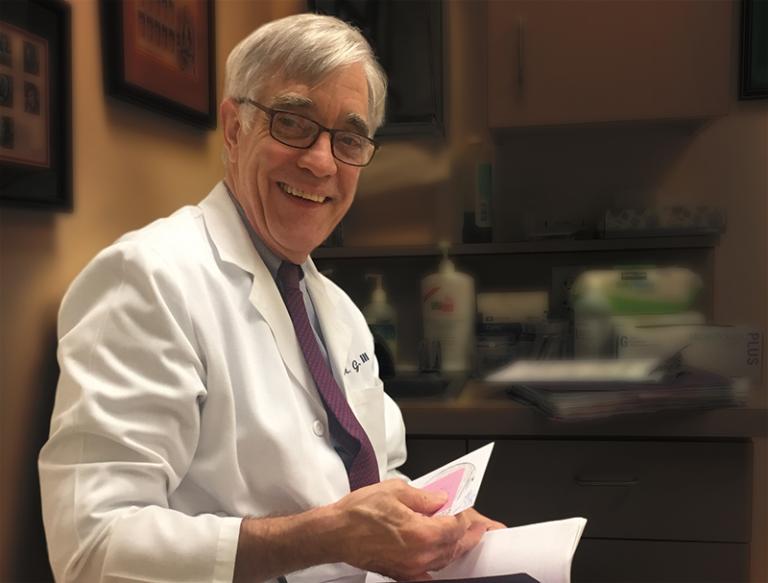
William H. Goodson III ’71
Senior scientist and breast cancer surgeon and researcher
California Pacific Medical Center Research Institute
The problem All of us, regardless of our health behaviors, are exposed daily to hundreds of environmental chemicals. Scientists are taking a new tack in cancer research, citing evidence that the current paradigm of exposure to a single “complete” carcinogen may miss the effects of cumulative exposure to mixtures of chemicals that work together to become carcinogens.
The increase in the age-adjusted incidence of breast cancer in the United States provides an example. Since the 1930s, the incidence has increased steadily and is now at about 129 cases in 100,000 women. Half of this increase was reported before mammography was in use. The incidence of breast cancer in men, however, while accounting for a much lower number of cases, follows a similar curve and is now about 25 percent higher than in the 1970s and double what it was in the 1930s. Goodson asks, “What in the world do men and women have in common?”
His answer, “They all breathe the same air, drink the same water, eat the same food, and use similar cosmetic products.”
The work Goodson and colleagues have studied four common chemicals: BPA (bisphenol A; in can linings), PFOA (perfluorooctanoic acid; in Teflon), terephthalic acid (in #1 plastic), and methylparaben (in cosmetics). Each has different effects on cell growth and cell death and on markers of DNA damage, and each is a substance people come into contact with every day.
The Halifax Project, a global collaboration of researchers that includes Goodson and David Carpenter ’63, has investigated eighty-five widely used “biologically disruptive chemicals,” most of which the National Health and Nutrition Examination Survey (NHANES) has found in blood and urine samples from random people in the United States. The Halifax Project showed that cancer-related mechanisms were disrupted by low-dose chronic exposure to fifty of these chemicals, none of which is considered a classic carcinogen.
HMS influence Goodson recalls that “HMS made it possible for students to spend a lot of time together, not just in classes.” He found that the chance encounters, the casual conversations, were invaluable and allowed him to learn not only from the faculty but also from his peers.
William Silen, the HMS Johnson and Johnson Professor of Surgery Emeritus, and chief of surgery at Beth Israel Hospital at the time of Goodson’s training, was a big influence. Silen used to tell trainees that a surgeon had to be as good an internist as an internist, and that surgery was just one more tool. “He had a great innate curiosity to understand what was going on instead of just operating on it,” says Goodson.
Next up Goodson sees two major challenges ahead. Because these exposures are ubiquitous, one challenge is how to conduct epidemiologic studies: everybody is already a subject and there can be no controls for comparison. The other challenge centers on how best to carry out this research in animal models. Questions to be answered include what makes cells grow? What makes cells not die?
Influential books Silent Spring by Rachel Carson and The Great Lead Water Pipe Disaster by Werner Troesken
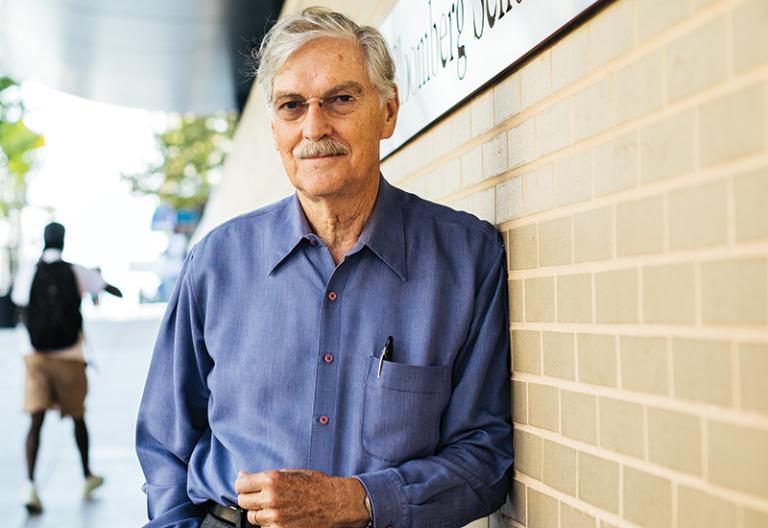
Robert Lawrence ’64
Center for a Livable Future Professor Emeritus
Professor Emeritus of Environmental Health and Engineering
Johns Hopkins Bloomberg School of Public Health
Professor Emeritus of Medicine
Johns Hopkins School of Medicine
The problem There are farms, and then there are factory farms. Agribusiness is a large part of the U.S. economy, one with recognized environmental and public health consequences. Antibiotic resistance, groundwater contamination, soil degradation, air pollution, loss of biodiversity, greenhouse gas emissions, and harmful levels of arsenic and nitrate in food and soil—all of these have been found to result from “big farma” operations.
The work The role that low-dose antibiotics used in industrial food-animal production play in the development of antibiotic resistance in humans has been well documented, yet these growth-promoting drugs are still used in the U.S. animal production industry.
Organic arsenic in poultry feed is broken down in the animal’s gut into inorganic arsenic, a class-one carcinogen, which finds its way into chicken and turkey meat sold for human consumption. Colleagues in the Center for a Livable Future, founded by Lawrence in 1996, uncovered “smoking-gun evidence based on direct data collection and work with the poultry industry.” Those findings led to the withdrawal of approval from the FDA for the remaining arsenical drugs in use in poultry feed.
Half of the seafood consumed globally now comes from farming, or aquaculture, which traditionally has relied on wild fish, an unsustainable source, as feed. Aquaculture is shifting to agriculture as a food source for farmed fish, thus linking the two food systems and potentially introducing further environmental stresses on already-taxed terrestrial farming and changing the nutritional composition of fish.
HMS influence Lawrence’s early work in primary/preventive care and health promotion launched him into a career in public health, including as a co-founder of Physicians for Human Rights. From his role as chief of medicine at Cambridge City Hospital (now Cambridge Health Alliance), where he witnessed the beginnings of the obesity epidemic in this country, to his role in establishing the Division of Primary Care at HMS, Lawrence has acted on his belief that health is a human right.
At Johns Hopkins Bloomberg School of Public Health, Lawrence’s academic home since 1995, he was the associate dean for professional practice for a decade before focusing full time on the work of the center. The center’s objective to not be “a think tank only, but a do tank as well” feeds its mission to translate science into policy and advocacy and to support research into solutions to problems in our food systems.
Next up Advocacy and policy work have been Lawrence’s arena for some time now, but it’s still the next big thing. The challenge he sees in translating science for the general public and getting past the climate-change deniers involves delivering clear messages about how the environmental effects of a high-meat diet relate to an individual’s health and the health of their family, where they live, and the planet.
Influential book A Sand County Almanac by Aldo Leopold
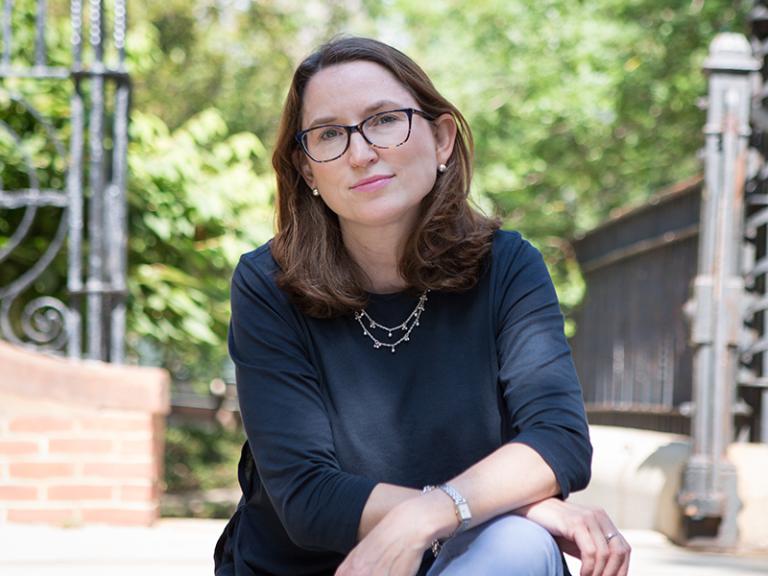
Elizabeth Pearce ’97
Associate Professor of Medicine
Boston University School of Medicine
The problem The only known use for iodine in the human body is to make thyroid hormone, the key regulator of metabolism. Although the U.S. population has been iodine sufficient since the 1940s, largely the result of the addition of iodine to salt, in recent decades evidence of lower iodine intakes are appearing in some populations, notably pregnant women.
This change is owed in part to a decrease in the consumption of iodized salt in this country. Adding to the problem of iodine insufficiency is the environmental ubiquity of perchlorate, a naturally occurring and synthetic chemical that competitively inhibits iodine uptake by the thyroid. In pregnant and lactating women, perchlorate exposure may reduce the level of thyroid hormone available to support the development of the fetus and newborn.
The work The U.S. population gets most of its dietary sodium from processed foods, which rarely contain iodized salt. Milk and dairy products provide most of our dietary iodine, meaning that vegans and people with lactose intolerance could be deficient. Dairy cattle take in iodine through their feed and from solutions used to clean the cows’ teats. As Pearce puts it, “If dairy farmers decided tomorrow to change the way they clean cows, we could all become iodine deficient.”
To mitigate the health effects of perchlorate, Pearce, her colleagues, and others in the field are actively promoting the use of iodine-containing multivitamins for pregnant woman, women who are planning a pregnancy, and women who are breastfeeding. Pearce’s research found that iodine is present in only about half of prenatal vitamins sold in this country.
Iodine is not mandated in the U.S. food supply. Although it’s a cheap nutrient to add to foods, the effort to add it is not often made.
HMS influence Although Pearce’s interest in iodine nutrition emerged early in her career, it was her first endocrine rotation at Mass General under Gilbert Daniels ’66, an HMS professor of medicine and director of the thyroid clinic at the hospital, that sparked her interest in all things thyroid. Her training as a thyroidologist took this interest further, leading to a passion for the public health effects of iodine nutrition and environmental disruptors of thyroid function, particularly in pregnant and lactating women.
Her parents count among Pearce’s strongest influences, however. Her father, Dennis Niewoehner ’65, is a pulmonologist, and her mother, Catherine, is an endocrinologist with a master’s degree and an undergraduate degree from Harvard.
Next up Research on the health effects of thyroid disruptors such as perchlorate is a relatively new field, and one that now has tools available for finer measurements and data collection.
In addition to determining what a safe level of perchlorate exposure is in pregnancy, Pearce aims to do more research on the long-term developmental effects of iodine deficiency and thyroidal disruptors on child development.
Findings from a study Pearce and colleagues published in Environmental Research earlier this year begin to delve into this area of interest. The researchers looked at the effects of perchlorate exposure on birth outcomes in a population of just under 2,000 mother-infant pairs in San Diego. The women were pregnant during a period between 2000 and 2003 when the county’s water supply had been contaminated with perchlorate. The study results showed an association between this exposure and increased birthweight in male infants.
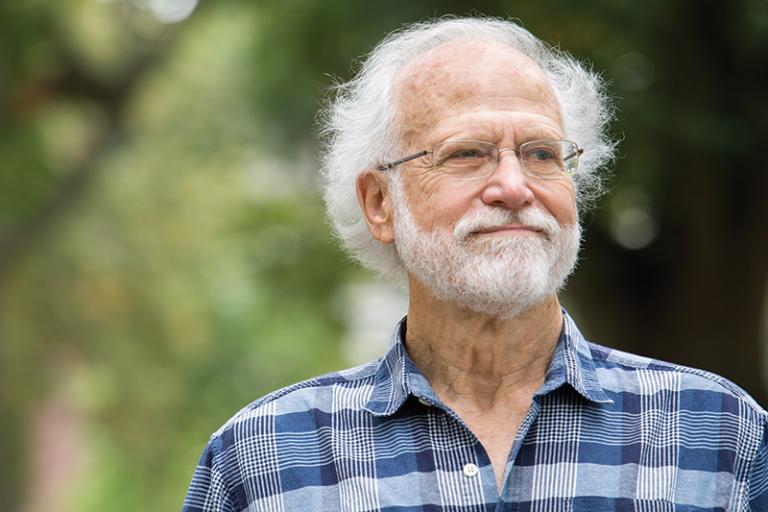
David Wegman ’66
Professor Emeritus
Department of Work Environment
University of Massachusetts, Lowell
The problem “How do you make decisions in the face of scientific uncertainty?” asks Wegman, “because you can’t just wait to take action until everything is known.” Some of the more contentious debates in environmental health today stem from the fact that changes proposed to enhance protection of health necessarily unsettles the status quo. Advocates for change will say there is enough evidence while those who have to make the changes, Wegman points out, will say the problem needs more study.
Wegman thinks occupational and environmental health conditions are more substantial determinants of the onset or course of disease than is generally recognized. Whether it’s irregular work schedules that result in poor diabetes management or stress-filled working conditions that influence the development of cardiovascular disease, the science and medical communities, he says, must factor in the sometimes even far-upstream effects that environment can have on health.
The work Wegman and others are conducting ongoing research in El Salvador among sugar cane workers. This workforce manifests a high incidence of kidney disease without evidence of hypertension or diabetes. Wegman’s studies indicate that a simple intervention that provides easy access to water along with shade and rest is promising. The toll that heat takes on the workers, marked by their development of kidney disease, remains a challenge when physical demands and heat exposure are severe. Although mechanization would eliminate the problem, it would also result in workers losing jobs, with few employment alternatives available. Wegman expects similar tensions to arise in research to assess this type of kidney disease among migrant laborers in Texas and California.
In addition to gathering evidence of harm to workers, Wegman teaches public health students how to use incomplete evidence to help make policy.
“More important than anything else,” says Wegman, “is to have the students understand that there is no absolute knowledge, and that you must be open to uncertainty even though it’s going to be hard as heck to challenge your own paradigms.”
HMS influence Wegman’s interest in public health is deep and wide. His father served as Secretary General of the Pan American Health Organization and as dean of the School of Public Health at the University of Michigan. But it was at Harvard that the spark for a career in preventive medicine was struck. David Rutstein ’34, the Ridley Watts Professor of Preventive Medicine Emeritus at HMS, and Victor Sidel ’57, a former member of the biophysics department at HMS and a past president and emeritus board member of Physicians for Social Responsibility, are two of Wegman’s early influences.
“My first publication,” says Wegman, “was a study Steve Schoenbaum ’66 and I did while students. We investigated the delivery of health care in Cambridgeport. It was a project that grew from an assignment from Rutstein—how is medical care delivered, how could it be delivered if all available resources were used or if additional resources were developed. Sidel was our advisor during that time.”
Next up Although Wegman’s investigations among sugar cane workers indicated that interventions reduce the deleterious effects of heat on kidney function, he and his colleagues are studying how the intervention can be improved and how the findings can be generalized. Wegman is also affiliated with several public health professional organizations in which he is promoting the study of occupational hazards that result from changes in climate.
Influential books Exploring the Dangerous Trades: The Autobiography of Alice Hamilton, M.D., by Alice Hamilton and Doubt Is Their Product by David Michaels
Images: Jeff Wojtaszek (top); Bob Huret (Goodson); Eli Meir Kaplan (Lawrence); John Soares (Pearce, Wegman)